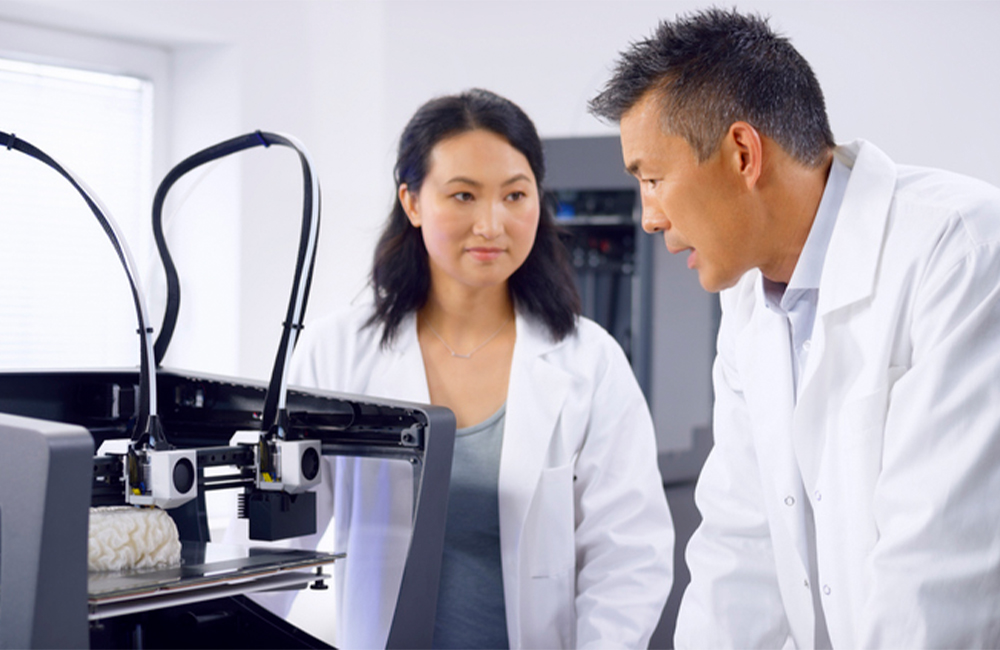VA Advances 3D Printing During Pandemic
The agency’s medical 3D-printing network is improving the patient experience.

The Department of Veterans Affairs has made significant advancements in its 3D-medical-printing capacities, including emergency application during the COVID-19 pandemic.
Speaking at the GovernmentCIO Media & Research Customer Experience event, a VA technologist described the ongoing development and expansion of the agency’s 3D-printing network. While VA had been testing various 3D-printing capacities over the past decade, these were formalized with the founding of the agency’s 3D-printing network in 2016.
“We have an Assistive Technology Department in Richmond, Virginia, that has been printing for probably about 10 years making assistive devices for patients specifically for physical therapy, occupational therapy, those types of situations. But we actually formalized the network starting in about 2016, and it has grown rapidly ever since,” said Nikki Beitenman, advanced manufacturing lead at the Veterans Health Administration’s 3D Printing Network.
While the formal genesis of VA’s 3D-printing network began at its facility in Puget Sound, Washington, other regional offices have established innovation hubs in its wake — including operations throughout the south and mid-Atlantic regions. While these regions currently possess more comprehensive operations, dozens of hospitals throughout VA now use 3D printing in patient care.
“We have set up national 3D-printing hubs — that would be Charleston, Seattle and Richmond — where they have a slew of printers, laser cutters, and are moving into injection molding. That’s what we’re calling the Advanced Manufacturing Hub where we have different things besides just 3D printers. But about 60 facilities across the country have printers,” Beitenman said.
The sudden demands of the COVID-19 pandemic have only seemed to drive home the utility of VA’s 3D-printing network, with a strained supply chain leading the agency to leverage and expand its existing 3D-printing capacities to produce personal protective equipment necessary for treating patients and keeping caregivers safe.
“COVID really showed where the weaknesses are in the supply chain for health care as a whole with [personal protective equipment] and different supplies facilities couldn’t get. So that’s where we’ve really skyrocketed, to the point of, ‘Okay we need supplies, and we need to get things now.’ So we turned to all the places that have 3D printers and said, ‘What can you make?’” Beitenman said.
While the VA’s 3D-printing network has provided essential support during the COVID-19 pandemic, the project has also continued to advance its core goal — providing more customized care and medical support in ways that allow caregivers to improve patient outcomes. This includes customized prosthetics as well as surgical prep for sensitive or complex procedures that allow physicians to prepare in advance to ensure finesse on the operating table.
“One of the most popular things that we’re focusing on now is 3D printing anatomical models for pre-surgical planning,” Beitenman said. “A big case that we’ve been focusing on is what is called a [left atrial appendage occlusion] type of cardiac case on the heart.”
In this procedure, the office can 3D print a model of a heart for surgeons to practice on before they touch a patient.
“For these types of cases, they’re trying to get an implant into a very small specific part of the heart, and they have to navigate a wire through different sections of the heart to get there. So by giving them a model, they can plan out and practice that surgery and know exactly what they’re going to do before they ever walk into the [operating room],” Beitenman said.
This is a carousel with manually rotating slides. Use Next and Previous buttons to navigate or jump to a slide with the slide dots
-

CDC Updates Public Health Data Strategy
Accelerating data sharing through capabilities like electronic case reporting make up a large portion of the new two-year plan.
3m read -

Transitioning Systems for Modern Agency Missions
IT modernization is a constant process necessary for improving customer service, mission delivery and collaboration.
40m watch -

HHS Makes One-Stop Cybersecurity Shop in ASPR
The agency is working on standards and cyber incident response capabilities to help health care organizations combat ransomware threats.
4m read -

Women Technologists Highlight Workforce Impacts in FDA IT Plan
Tech leaders tackle amplifying women in the workforce as the agency works toward its two-year IT modernization plan.
3m read




